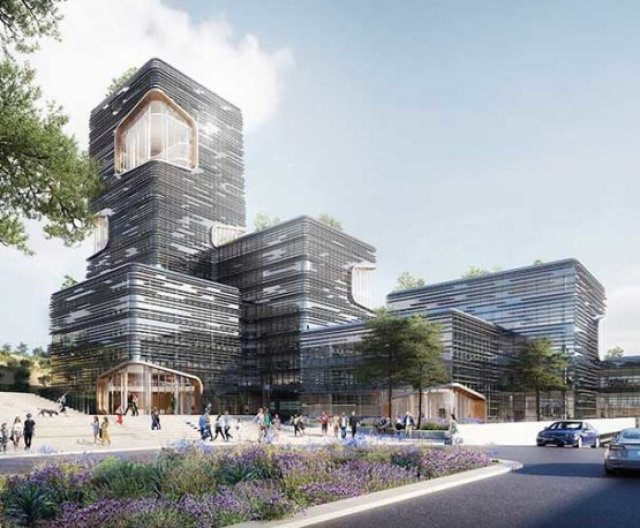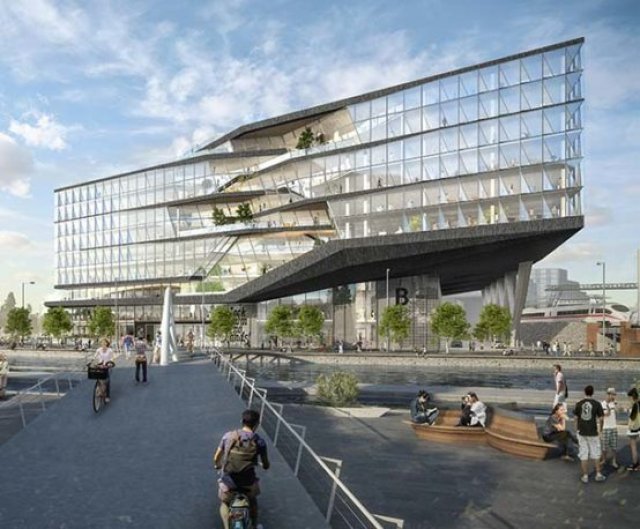
In 2020, many of us saw our societies shift to a digital world practically overnight. For decades, our lives have been increasingly moving into the online realm, but the global pandemic has dramatically accelerated the transition towards a digital economy. Post-corona, society will continue on this path. While this shift to hybrid working lives is seemingly abrupt, it was in fact a long time coming.
© image courtesy of UNStudio – project FOUR Frankfurt

While many wonder whether the pandemic marks the death of large corporate offices, we believe it actually presents an opportunity to reimagine these spaces and make our workplaces more dynamic than ever. We are now heading into a new era of design, one heavily focused on the health and wellbeing of people and our planet. Looking specifically at workplaces, this will see a transition from designing for efficiency to a more holistic approach where inclusion, equity, resilience, sustainability – and most importantly health – are key drivers in the design.
© image courtesy of UNStudio – project TBC Forum Georgia

For decades, our societies were already becoming more digitised, with advancements in cloud computing, artificial intelligence, 5G and big data propelling us further along the technological track in recent years. But while the digital revolution has already permeated most facets of our lives, the same cannot be said for within the built environment; the industry is still yet to extensively adopt the use of technology and data as a way to positively impact how we design and build.
© image courtesy of UNStudio – project TBC Forum Georgia

In 2015, the University of Twente and CBRE conducted an extensive study into the relationship between people’s working environments and their health, wellbeing and ability to perform. Among their findings, they discovered that seemingly simple design features such as access to plant life and optimal lighting can significantly boost cognition, performance and spirits.
© image courtesy of UNStudio – project Booking HQ Amsterdam

In relation to light alone, the study found that more than 70% of people felt more energised and happier as a result of good lighting in their office. When measured in terms of productivity, this translated to a 12% improvement in work performance. Knowing the impact that environmental factors including light, sound, scent, air quality and temperature have on our health and wellbeing, offices of the future will incorporate smart technology that adjusts to the user’s ever-changing needs and activities. One such example is Soliscape, an innovative lighting and acoustic system using sensors to determine the optimum conditions for the wellbeing of those using the space, thus digitally enhancing the interior environment to suit their needs.
© image courtesy of UNStudio – project TBC Forum Georgia

Aside from technological advancements, the flexibility of buildings will also be crucial for them to be able to withstand such global shocks as a pandemic. For office buildings to remain relevant and usable, they need to be multifunctional. With many predicting that the future of office work will be a hybrid model, buildings that only serve a singular purpose as a place of work are fast becoming outdated. Around the world, we have numerous constructions currently underway for mixed-use buildings that feature combinations of work, housing, culture, retail, hotel and education spaces, and that are flexible enough to be adapted to suit the changing needs of their users over time.
© image courtesy of UNStudio

The Soliscape family
An extremely versatile and flexible system, specifically designed to create human-centric environments.